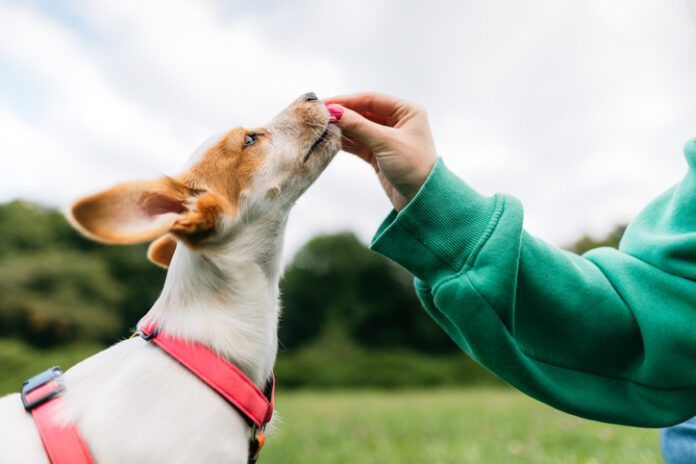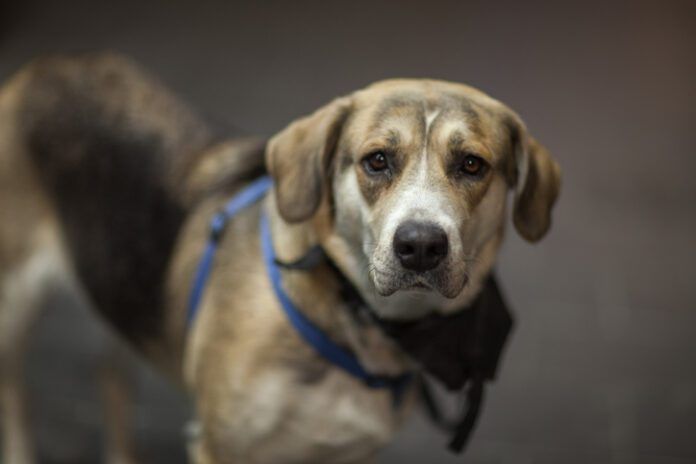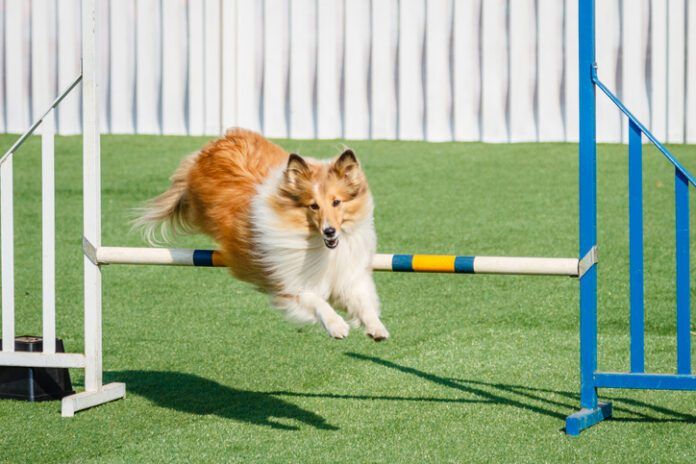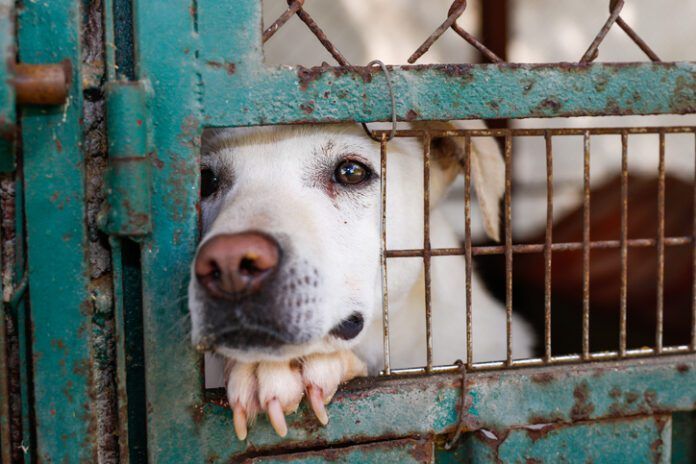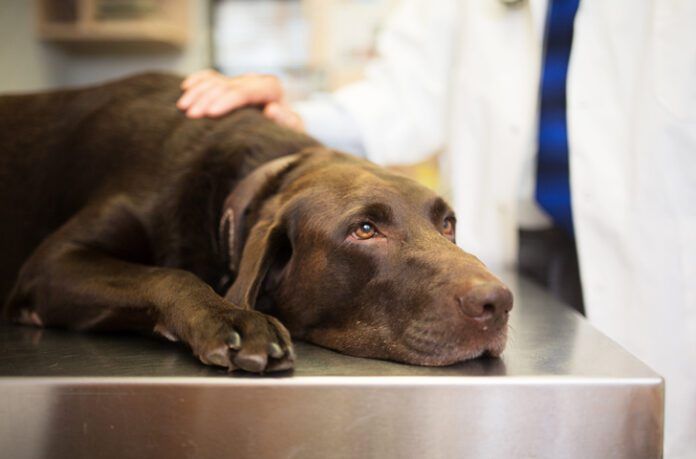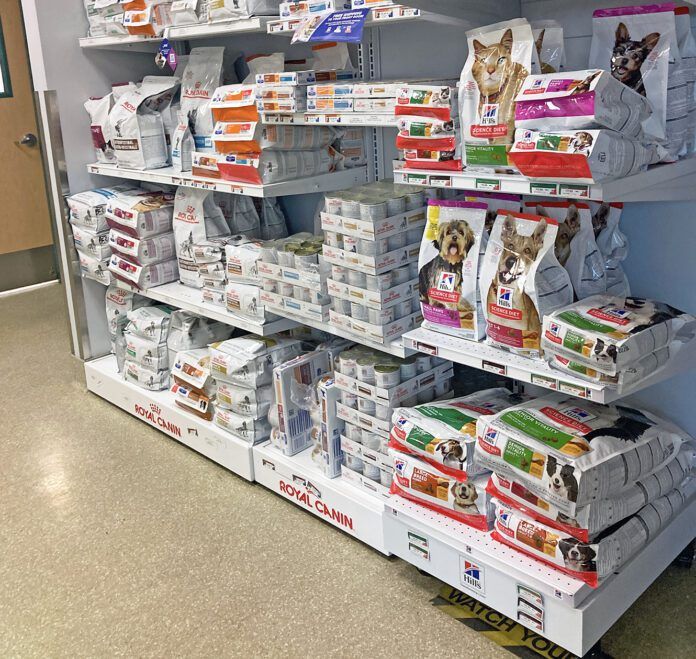Has your veterinarian told you that you should buy a dog food that’s low in protein for your dog? If so, there are some things you should understand about dog food with low protein.
While protein is vital to a dog’s health for energy and to support the dog’s vital organs, skin, hair, tendons, ligaments, muscles, and more, many dogs are prescribed low-protein diets. In dogs with kidney issues, a reduced protein intake can alleviate some of the workload on the kidneys. Other medical conditions, such as chronic gastrointestinal upset or liver disease, also may benefit from restricted protein intake. However, there is dog food that is low in protein, and there is dog food with really low protein.
What Is a Low Protein Dog Food?
The Association of American Feed Control Officials (AAFCO) guidelines set a minimum protein percentage of 18% for adult maintenance and 22.5% for dogs of all life stages (ALS, which includes growth and reproduction), on what’s called a dry matter (DM) basis (more about that in a minute).
Diets with a protein concentration below the legally required minimum levels for most dogs must be prescribed by a veterinarian. The dog food with the lowest protein level you can purchase without a prescription is 18% protein on a dry matter (DM) basis. (This is how much protein is in the food with the product’s moisture removed.) But the prescription low-protein dog foods contain far less than that; some contain as little as 13% or 14% protein.
Before you buy, you need to know whether your vet wants your dog to be fed a prescription low-protein dog food, or just a lower-protein dog food? Because, besides the legal minimum for most dogs, there are no definitions or standards for what are considered low-protein diets, diets with moderate protein levels, and high-protein diets. And many foods that contain high-quality ingredients may contain twice as much protein as the legal minimum, or even more! Most veterinary nutritionists consider the following ranges for protein on a DM basis:
Low protein: 20% or less
Moderate/Normal: ~25%
High Protein: 30% or higher
So: Does your dog need a diet that has prescription-low levels of protein, or just an amount of protein that’s on the lower end? It likely depends on the severity of the health problem that your veterinarian is trying to address.
What to Look for in a Low-Protein Dog Food
When looking at low-protein diets, prioritize high-quality, highly digestible protein sources. These include animal-based proteins, such as meat and eggs, which tend to have optimal amino acid profiles and are highly digestible by dogs. With these sources, dogs will get the most benefit out of the smaller amount of protein they consume. You should see these ingredients listed among the first five ingredients.
The Difference Between Dry Matter and “As Fed” Nutrient Levels
All dog food labels list the product’s minimum protein and fat and maximum fiber and moisture in the guaranteed analysis. These numbers are referred to as the “as fed” values – meaning, as the product exists in the bag or can. In contrast, nutritionists prefer to discuss a food’s nutrient levels on a dry matter basis, so they can compare nutrient levels in diets with varying amounts of moisture in them. Dry matter values consider the nutrient concentration in the food if all the moisture were to be removed. The higher the moisture content, the lower the as-fed protein will be because the water in the food “dilutes” the nutrient concentration.
Most dry dog foods contain a maximum of 10% moisture. To determine the protein content of a food expressed on a dry-matter basis, subtract the moisture content of the food from 100 to get the dry matter factor. (If the food contains 10% moisture, the dry matter factor would be 90.) Then, divide the as-fed protein percentage by the dry matter factor; the result is the amount of protein on a dry matter basis.
Converting As-Fed Protein Levels to Dry Matter Protein Levels
| Food Type | % Moisture
Dry Matter Factor | Protein %
As Fed | Doing the
Math | Protein %
Dry Matter Basis |
| Dry Food | 10%, 90 | 16.2% | 16.2÷90 = 0.18 | 18.0% |
| Dry Food | 10%, 90 | 20% | 20÷90 = 0.22 | 22.0% |
| Dry Food | 10%, 90 | 25% | 25÷90 = 0.27 | 27.0% |
| Dry Food | 10%, 90 | 30% | 30÷90 = 0.33 | 33.0% |
| Dry Food | 10%, 90 | 35% | 35÷90 = 0.38 | 38.0% |
| Dry Food | 10%, 90 | 40% | 40÷90 =0.44 | 44.0% |
| Canned Food | 78%, 22 | 4.0% | 4÷22=0.18 | 18% |
| Canned Food | 78%, 22 | 6.0% | 6÷22=0.27 | 27% |
| Canned Food | 78%, 22 | 10.0% | 10÷22= 0.45 | 45% |
| Canned Food | 78%, 22 | 15.0% | 15÷22= 0.68 | 68% |
Don’t Go Too Low
Be careful choosing your dog’s protein level. Protein is vital to your dog’s health and going too low can cause physical problems like muscle loss and weakness. In a healthy dog, excess protein is simply excreted in the urine.
Low-protein diets should not be fed to growing puppies, highly active dogs, or pregnant or lactating dogs. Protein is important for dogs who are growing, have higher protein requirements for muscle maintenance and repair, or have higher nutritional needs. In the absence of specific health issues, healthy adult dogs generally do well with a balanced diet containing moderate protein levels.
If your dog is suffering from health issues, be sure to work with your veterinarian to find a diet that has the appropriate levels of protein given their current health status.
Low-Protein Prescription Diets for Dogs Have Very Low Protein Levels
Diets that have been formulated with very low protein levels are available only with a veterinarian’s prescription and should be fed under the guidance of a veterinarian. These foods should not be fed to puppies, growing dogs, or pregnant or nursing females. Also, they should not be fed for years and years, as they contain less of the protein that has been determined to be the minimum required for dogs.
The following are prescription low-protein foods for dogs, with their protein content expressed on a dry matter basis. Your dog may not require a prescription low-protein diet; an over-the-counter dog food with a lower-protein content may be therapeutic enough.
Hills Prescription diet k/d with chicken
Protein min 15.6% DM
Hills Prescription diet k/d + j/d chicken flavor
Protein min 15.9% DM
Hills Prescription diet u/d
Protein min 13.8% DM
Royal Canin Canine Urinary UC
Protein min 20.0% DM
Royal Canin Canine Urinary SO
Protein min 18.0% DM


